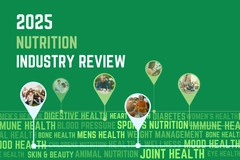Babies emulate adults with snacking and free-from trends, reveals Innova Market Insights
21 Apr 2020 --- Prepared food is the leading category for growth in infant nutrition NPD as adult themes such as free-from and superfood positionings become increasingly important in post-weaning categories. This is according to Innova Market Insights, who have revealed that while launches are rapidly growing across all sub-categories, baby snacks are leading the charge. However, the market researcher also notes that early-stage infant nutrition is still firmly focused on the developmental needs of babies.
“Additive-free claims appeared on around two-thirds of new products in these areas of infant nutrition in 2019. Meanwhile, around half also carried organic claims,” says Lu Ann Williams, Director of Innovation at Innova Market Insights. This points to activity in baby snacks, desserts and meals being firmly centered on natural and unadulterated formulations.
As adult consumers become increasingly aware of what they are consuming, the baby sector is also seeing growing attention paid to “super” ingredients from the plant world; protein and fiber claims; and “free-from” positionings. No added sugar claims are also growing. Although they remain relatively niche, ethical claims are also rapidly gaining traction.
 The infant nutrition category continues to witness growth in NPD innovation.Taking a different route to the free-from demands, Square Baby offers an “Early Allergen Introduction,” a line of whole, fresh baby foods containing the top eight allergens. Studies like LEAP, EAT and PETIT have proven that offering babies allergens early and often can help prevent food allergies from developing by up to 80 percent. “That’s why the American Academy of Pediatrics is recommending early allergen introduction,” Katie Thomson, Co-Founder and CEO of Square Baby, previously told NutritionInsight.
The infant nutrition category continues to witness growth in NPD innovation.Taking a different route to the free-from demands, Square Baby offers an “Early Allergen Introduction,” a line of whole, fresh baby foods containing the top eight allergens. Studies like LEAP, EAT and PETIT have proven that offering babies allergens early and often can help prevent food allergies from developing by up to 80 percent. “That’s why the American Academy of Pediatrics is recommending early allergen introduction,” Katie Thomson, Co-Founder and CEO of Square Baby, previously told NutritionInsight.
In the baby snacks sector – which are generally aimed at older infants and toddlers – there is 12 percent penetration for vegan claims, compared with 4 percent in infant nutrition as a whole. Baby snacks as a category have seen NPD rise at a CAGR of 33 percent over 2015-2019. This is reflective of the broader snacking trend observed, as the “fourth meal culture” emerges from a society persistently pressed for time.
Meanwhile fruit, desserts and yogurts introductions grew at 21 percent CAGR. These figures compare with 13 percent average annual growth in baby formula and milks. Toddler formulas are also on the rise, with a recent paper stating that formula companies have quadrupled their spending on toddler milk marketing in ten years, which often feature unsubstantiated claims.
Notably, early-stage nutrition is firmly focused on the science of nutrition, with ongoing development in the push towards ever closer mimicry of breast milk. Earlier this year, TurtleTree Labs unveiled the world’s first human breast milk created using cell-based technology. Notably, the company is claiming to have cracked the code in producing a complete nutritional biomatch to human breast milk.
At the same time, personalization is important so parents can choose milk formulas suited to their babies’ specific needs, flags Innova Market Insight. Earlier this week, Stefan Rüdenauer, Global Director of Human Nutrition Research and Development at BASF, told NutritionInsight how human milk oligosaccharides (HMOs) are an approach to answer the increasing demand to support beneficial bacteria in a tailored way – even in adults.
Edited by Katherine Durrell












